https://mil.news.sina.com.cn/china/2020-09-12/doc-iivhuipp3943128.shtml
别再迷信美军X-37B 打这种轨道的目标连印度都能做到
2020年09月12日 13:50 观察者网
0
[文/观察者网专栏作者 石豪 科研工作者、航空航天观察者]
9月4日,我国在酒泉卫星发射中心成功,利用长征二号F运载火箭,成功发射一型可重复使用的试验航天器。在经历了两天的在轨飞行后,该航天器于9月6日成功返回预定着陆场,试验取得圆满成功。
许多朋友纷纷猜测这是中国版的“X-37B”,一时间这种美国发展的小型航天飞机获得了空前的关注度。
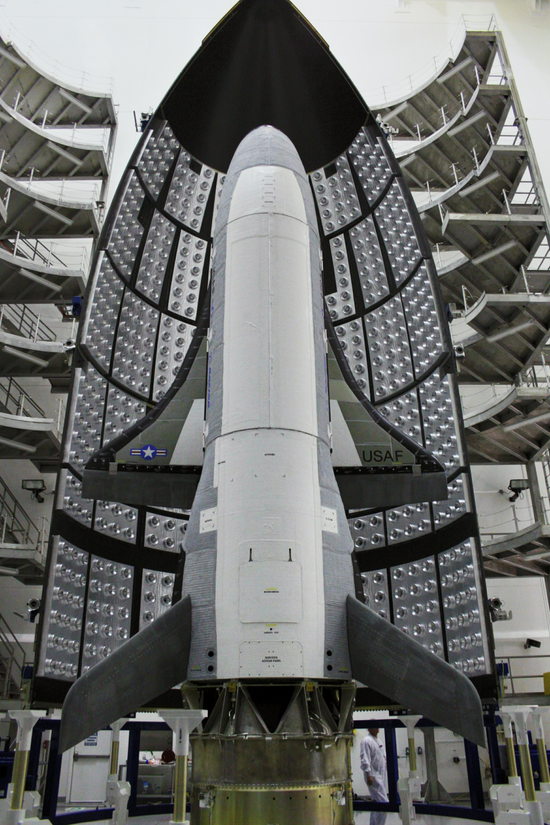
X-37B与火箭整流罩 | 图片来源:美国空军
有说法称,“X-37B”是一种空天飞机。
有说法称,“X-37B”是一种高超音速武器,最大速度超过25马赫。
还有说法称,“X-37B”是一种太空战斗机/太空轰炸机,可以自由变轨,可以快速响应,将核弹头出其不意扔到敌国。
那么,X-37B真能担得起这些美誉吗?
问:X-37B真是空天飞机吗?
要回答这个问题,我们可以看一看“航天飞机(Space Shuttle)”是如何定义的。
根据《中国大百科全书(第二版)·航空航天卷》,航天飞机是这么定义的:“有人驾驶,可以重复使用、往返于地面和近地轨道之间运送人和有效载荷的飞行器,兼具载人航天器和运载器功能,并按飞机方式着陆的航天系统。美国空间运输系统的简称。”
注意,美国空间运输系统Space Transportation System (简称STS),不止我们一般认知中的“航天飞机”,还包含航天飞机的外挂燃料贮箱和两个固体火箭推进器,也就是航天飞机发射升空时的样子。
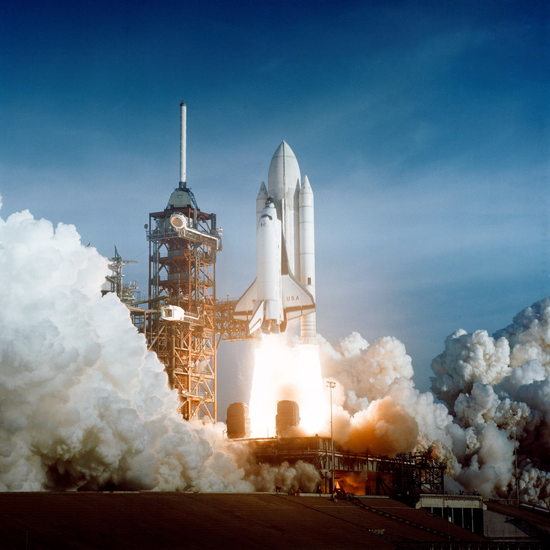
航天飞机首次发射任务STS-1 | 图片来源:NASA
至于空天飞机,由于目前尚未出现投入使用的型号,所以现有的《中国大百科全书》并未收录词条。根据另外一部权威辞书《大辞海·天文学地球科学卷》,空天飞机是这样定义的:“亦称‘航空航天飞机’。兼具航空飞行器、宇航运载器和宇航器功能的可完全重复使用的高超声速载人航空航天飞行器。安装有冲压空气喷气发动机和运载火箭发动机。能像飞机一样在普通机场跑道水平起降。在30千米以上高空,能以5~15倍声速像飞机一样在大气层中飞行;待到达大气层边缘时,运载火箭发动机点火,像宇航器在空间轨道上运行。完成任务后返回地面,经维护后重新使用。”
尽管学者对空天飞机的定义可能不同,但有几个关键点是明确的:空天飞机应该是水平起飞,并且有从大气层内飞入太空的能力。
因此,从任何一个角度来看,由火箭垂直发射的X-37B也不是“空天飞机”,说是“无人航天飞机”或者“可重复使用的无人航天器”更为准确。
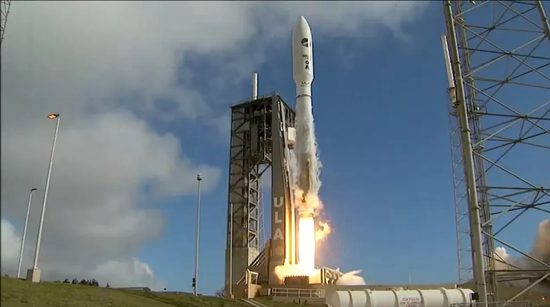
X-37B(OTV-6任务)发射 | 图片来源:ULA
问:X-37B真是高超音速武器吗?
根据笔者的考证与猜测,这个问题的提出是源于X-37B的前身——X-37验证机的一个技术指标:“X-37能够在25倍音速(25马赫)的环境下运行,并在太空和再入大气层的恶劣环境中测试技术”。
这是NASA马歇尔中心在2003年发布的一份资料中表述的。
也许在2003年以后,人们就已经对X-37系列航天器的真实用途展开了猜测,相关的描述也确实令人浮想联翩。尤其是在最近几年我国高超音速武器获得重大进展后,人们可能会结合25马赫这个指标,把X-37B和美国DARPA的Falcon系列高超音速飞行器联系起来。
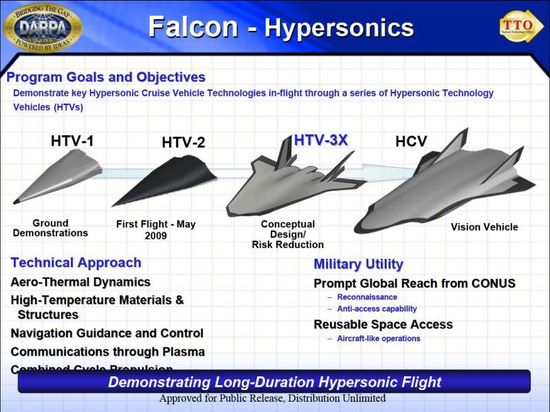
Falcon高超音速验证机系列 | 图片来源:DARPA
但很遗憾的是,这是一种误读。NASA的说法很明白,X-37验证机要经受的环境是轨道飞行和再入大气层。
轨道飞行是指飞行高度高于100~120千米的冯卡门线,在冯卡门线以上的高度,空气极为稀薄,马赫数这个概念当然不适用,对航天器的影响主要是长时间的阻力累积。
再入大气层很好理解,返回式卫星、载人飞船、航天飞机在回到地面前都要经历这个过程,X-37B也不例外。但是这个过程是“一锤子买卖”,并不是像高超音速武器那样有一个“拉起”,或者“打水漂”的过程。
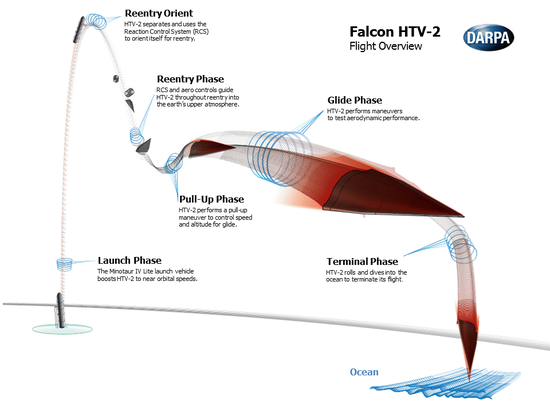
美国HTV-2高超音速飞行器飞行流程 | 图片来源:DARPA
迄今为止,X-37B总共执行了6次任务,全部是轨道飞行任务,时长从半年到两年不等。从X-37B的别称“轨道测试飞行器”(Orbital Test Vehicle, OTV)也能看出端倪——X-37B是为轨道飞行准备的,而非临近空间高超音速飞行。
最后,从波音X-37B的总工程师Arthur Grantz于2011年发表的文章来看,X-37B及其原型机的设计初衷,是由于航天飞机的轨道飞行时间只有10天左右,无法完成许多需要长时间留轨并返回地面的试验。随着航天飞机退役,联盟号飞船在搭载宇航员后的额外运载能力有限,这种能力缺口变得尤为明显。
在X-37B的设计中,研究人员也将其与航天飞机,而不是高超音速飞行器对比:
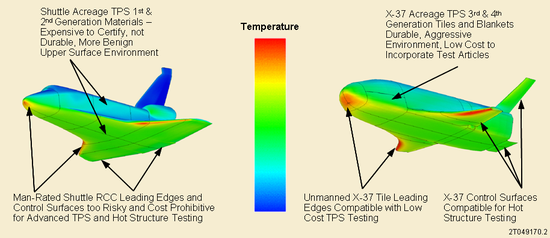
X-37B是一种很好的热防护验证平台 | 图片来源:Arthur Grantz@Boeing
因此可以说,X-37B确实不是一种高超音速武器。
问:X-37B真是太空战斗机吗?
要回答这个问题,我们先要看一看太空战斗机与大气层内战斗机的区别。
说起战斗机,我们首先想到的,可能是歼-20或者F-22这样的飞机,它们拥有卓越的气动设计,澎湃的动力,先进的飞控,强大的雷达,还能够像鬼魅般在敌方雷达体系中潜行。
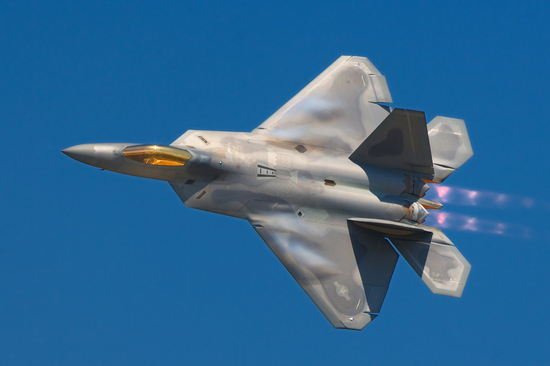
F-22战斗机 | 图片来源:Rob Shenk
这样的战斗机,能够轻易改变自己的飞行轨迹和飞行姿态,在战斗中抢占先机。
但太空战,是一个完全不同的领域。
在地球轨道上,任何物体的轨道都可以大体看做与地球引力中心的“二体问题”,会有各种小扰动,但是大差不差。航天器的地球轨道可以用六个轨道根数完全表征,又叫轨道六要素。
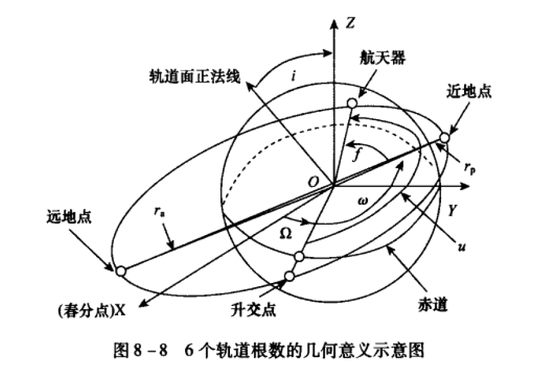
图片来源:彭成荣@中国空间技术研究院
看起来很复杂,其实对太空战斗机来说,核心只有一个:太空作战有自己的轨道,活动范围在几千到几万千米,想要改变轨道就要付出很大的代价。
与此相比,大气层内战斗机的活动范围只有几十到几百千米,还可以充分利用大气层产生升力。
大气层内战斗机是战术武器,而太空战斗机的活动范围,是战略级别的。
自由是要付出代价的。
物理定律将太空战斗机自由机动、自由改变每一个轨道根数的代价都标好了价格。
这个价格就是ΔV——速度增量。每一次获得速度增量,都会根据太空战斗机的质量转化为推进剂消耗,并最终累加到发射成本上。
对于改变轨道高度,改变在轨道面内位置等常规操作而言,太空战斗机和普通卫星并没有差别。
而对于改变轨道面与地球赤道面夹角——轨道倾角,则需要很大的速度增量,只能在大气层外飞行的普通卫星就要消耗巨量的推进剂。
也许太空战斗机可以飞入大气层,巧妙利用大气阻力完成轨道倾角的转变?
我国科学家曾经专门对此进行了模拟仿真,用的就是X-37B的气动模型。
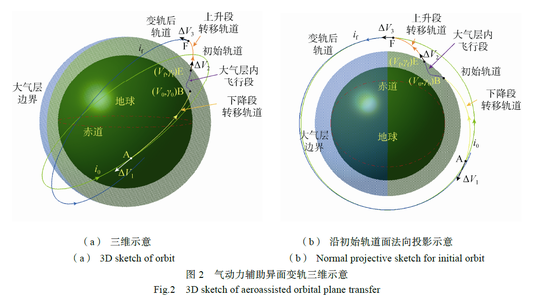
图片来源:左光(等)@北京空间技术研制试验中心
结果,大气变轨所需的速度增量反而比普通卫星还多。
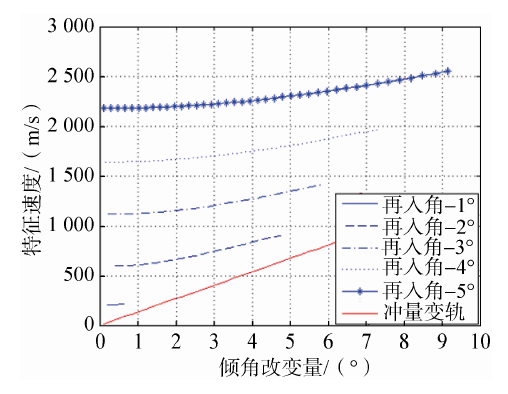
图片来源:左光(等)@北京空间技术研制试验中心
当然,根据美国的文献,在倾角改变量大于10度时,气动变轨是可以优于传统卫星的冲量变轨的。
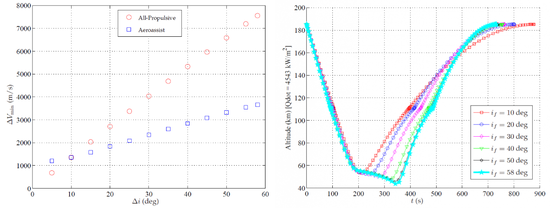
图片来源:Anil V。 Rao(等)@University of Florida
但仔细一看,气动变轨所需的速度增量依然在1000m/s以上,这对于X-37B的小身板来说,实在是太难为它了。
问:X-37B是不是太空轰炸机,往其他国家扔核弹头?
X-37B确实像航天飞机一样,有一个货舱,可以带一些设备,比如太阳帆板、机械臂之类。
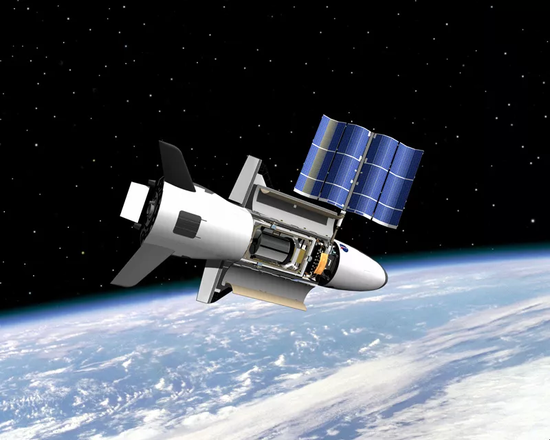
X-37B的货舱 | 图片来源:NASA马歇尔中心
甚至,X-37B在试验任务中,也确实在轨释放过若干小卫星。
但X-37B还是需要传统的运载火箭发射,发射准备时间是以天为单位的,既不能与大洋深处潜伏的潜射洲际导弹相比,也不能与大山深处神出鬼没的陆基机动洲际导弹相比——它们的准备时间是以小时,甚至分钟计算的。
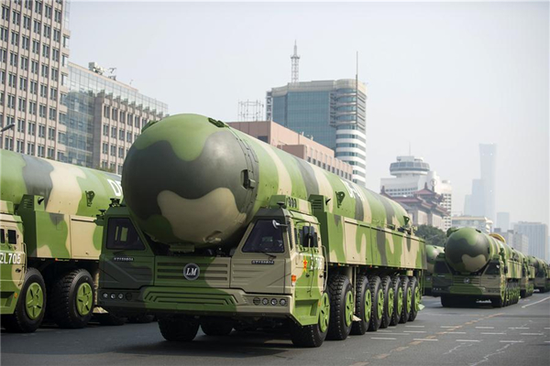
DF-41洲际导弹 | 图片来源:张豪夫@新华社
退一步说,X-37B从整备到发射入轨,再到飞越敌国进行打击,所需时间有多长姑且不论,其隐蔽性是非常差的。
举个例子,美国保密程度极高的锁眼系列侦察卫星,就曾经被有心的天文观测者拍摄下来:
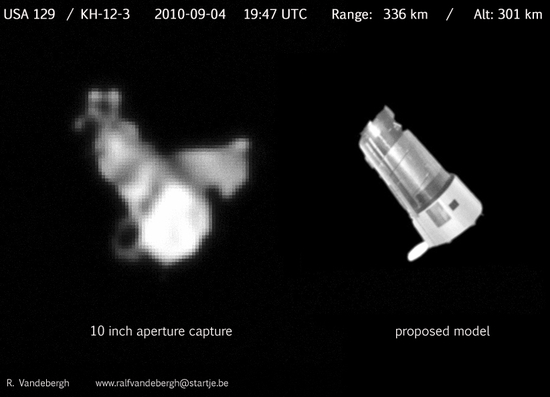
天文望远镜捕捉的KH-12卫星 | 图片来源:Ralf Vandebergh
一般的天文观测者都可以做到,更何况航天大国。
只要X-37B入轨,它的轨道就能被确定下来,它可以随便变轨,但是想重新确定它的轨道也不是什么难事。在现代天文跟踪观测体系下,直径10厘米的空间碎片都能被准确跟踪编目,更不用说X-37B了。
对了,发现就意味着摧毁。
说句有冒犯性的话,打X-37B轨道的目标,连印度都能做到。
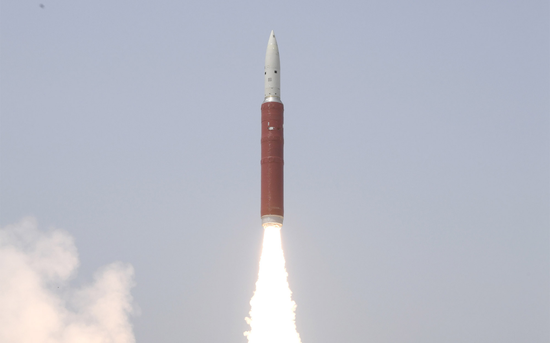
2019年印度反卫星试验 | 图片来源:印度政府
再退一步,就算X-37B入轨后就能直接对别国进行打击,那为什么不用洲际导弹呢?洲际导弹在中段的可侦测性很低,目前中段反导依然是世界性难题。
再退一步,如果美国就想发展一个“轨道轰炸机”,能够在轨飞行,并且在飞越敌国时发射核弹头。那为什么不用大型卫星平台,或者弹道导弹的多弹头载具平台呢?何必多此一举,让“轨道轰炸机”还能返回地面,额外付出再入大气层所需的防热代价。
综上所述,不管是“太空战斗机”,还是“太空轰战机”,对于X-37B而言,都是一种鸡肋的属性。
可以,但没必要。
X-37B对于中国的启示
航天飞机曾经是美国航空航天技术的骄傲,是美国的国家象征。美国开辟了“航天飞机”这个领域,并常年领跑。
但是,技术上的伟大成就无法掩盖航天飞机没有达到“降低进入太空成本”这一初衷的尴尬。而14名宇航员的牺牲,更是全人类航天事业的灾难。
作为旁观者,我们对航天飞机的功过成败有科学、客观的理解。
作为追赶着,我们对航天飞机及相关技术的先进性也同样有深刻的认知。
从某种程度上,X-37B可以说是航天飞机的精神续作。
但就像对航天飞机一样,我们不应该对X-37B有着超越其本身能力的,不切实际的崇拜——就算有,在科学的分析论证下,也会不攻自破。
而在科学技术层面,我们也应当充分认识到中国基础的薄弱性。
基础的薄弱是从旧中国继承而来的,我们没有办法改变历史。
但这也意味着我们应当付出更多的努力,追赶基础好的“世界领先水平”。
别人掌握的,我们也要掌握。别人已经发展成熟的,我们要更快地追上去,抹平差距。
没有技术,和有技术不用,不是一回事。
而更进一步,别人没有掌握的,我们通过创新,也可以掌握,别人没有的,我们也可以有。
我们也一定会有。
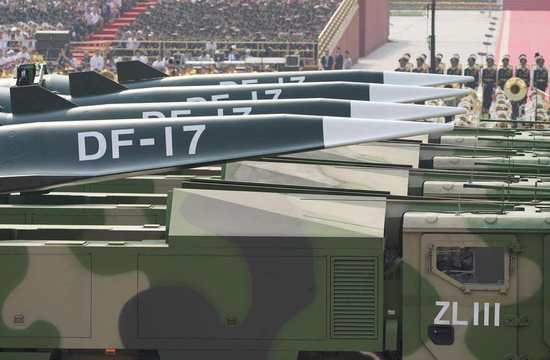
DF-17导弹 | 图片来源:中央广播电视总台
关键字 : 美国
我要反馈
https://mil.news.sina.com.cn/china/2020-09-12/doc-iivhvpwy6285003.shtml
美媒:面对中国东风21D 美军舰载机的航程太可怜了
美媒:面对中国东风21D 美军舰载机的航程太可怜了
566
美国《任务与目标》网站2020年6月15日刊发文章称,在全球范围“反恐战争”过去近20年后,美国军方开始将注意力从这种非对称战争转移到可能与中俄等国发生的近对称军事冲突上。
文章称,尽管在航天技术等方面,美国一直保持领先地位,但在一些武器技术上,美国显然已经落后了。由于陷入反恐战争泥潭近20年,一些用于对付高技术对手的武器技术受关注度显著下降。
其中一个典型例子就是,高超音速飞行技术,这是一个发展迅速的领域。迄今为止,没有任何现有防空系统能够有效对抗高超音速(高于5马赫)武器。中国和俄罗斯都声称自己的武库中包含高超音速武器,其中,中国的DF-21D高超音速反舰导弹对美国军事战略造成的破坏比任何其他武器都严重。
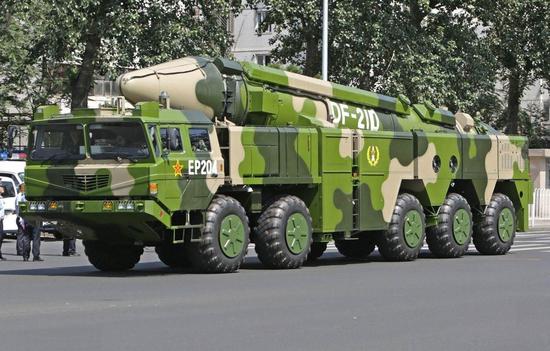
[DF-21D反舰导弹是美国的噩梦]
虽然DF-21D的高速度是对美国海军舰艇构成威胁的一个重要因素,但最关键的问题在于这种导弹的射程。DF-21D的有效射程约为2000千米,通过在中国沿海部署这些平台,中国人民解放军得以实施一种区域封锁战略,或者足以使美国军舰远离中国海岸至少2000千米。
此外,这些导弹除了可以携带常规弹头和核弹头,其飞行速度所产生的巨大动能足以击沉许多船只,如果再加上爆炸弹头,甚至可以想象一次攻击就足以让一艘“尼米兹”级超级航母退出战斗。
DF-21D对美国利用航空母舰作为武力投射方式的常用战略构成了重大挑战。美国海军目前拥有一支由11艘超级航母组成的超级舰队,一艘航母的火力打击能力甚至超过了一些国家整个海军的打击能力。一艘“尼米兹”级航母最多能携带130架F/A-18“超级大黄蜂”战斗机,或多达90架不同类型的飞机,以及6000名船员。美国利用这些航母向全球任何地区投送大量兵力,利用舰载机打击数百千米外的目标。
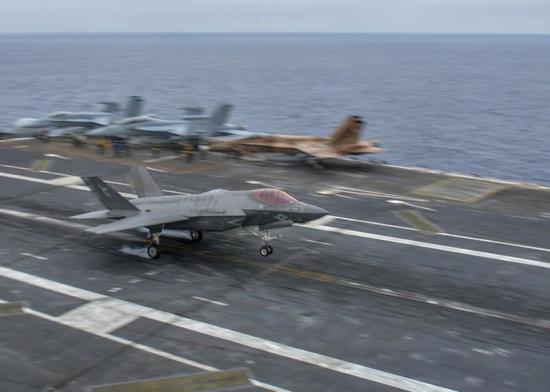
[F-35C闪电II降落在“尼米兹”号航母上]
目前,美国海军的BlockII型“超级大黄蜂”战斗机在最大武器挂载情况下,作战半径约为800千米。即将推出的BlockIII型战斗机将增加保形油箱,使其能够携带3500磅的附加燃油,这样它的航程就增加了约480千米,或作战半径增加了240千米。
洛克希德·马丁公司研制的F-35C战斗机的续航里程比BlockII型“超级大黄蜂”战斗机增加了10%,作战半径约为1060千米。但是,这一作战半径也远远低于中国DF-21D反舰导弹2000千米以上的有效射程。
文章指出,美国海军的MQ-25空中加油机可以使BlockIII型“超级大黄蜂”的作战半径延伸至1360千米,使F-35C作战半径延伸至1380千米。这种航程的增加是相当可观的,但还无法使这些战斗机在DF-21D的防区外发动攻击。
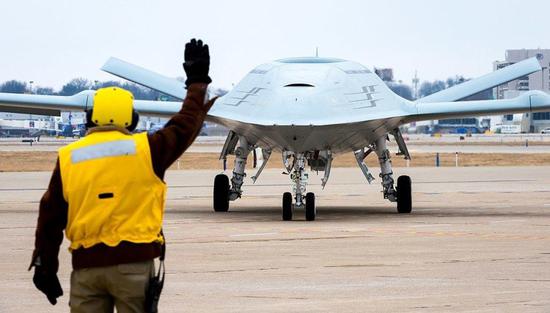
[MQ-25加油机是舰载机力量倍增器]
文章提到,美军下一代B-21轰炸机可能会在中国沿海上空执行远程轰炸任务,并摧毁DF-21D和其他高超音速反舰导弹阵地,让美国航母远离中国的防御纵深。然而,由于DF-21D是陆基机动式部署,很难确定这些平台的具体位置,这就需要其他军种的情报支持。
文章最后指出,从军事战略角度看,阻止21世纪对华战争的最有效方法是确保美国能赢得这场战争的胜利。为了实现这一目标,美军需要迅速缩小中国区域封锁能力所造成的差距,而解决这一矛盾的关键在于增加战斗机的航程。
https://mil.news.sina.com.cn/china/2020-09-12/doc-iivhuipp3943128.shtml
Don’t be superstitious about the US X-37B’s goal of hitting this track, even India can do it
September 12, 2020 13:50 Observer Network
0
[Text/Observer network columnist Shi Hao, scientific researcher, aerospace observer]
On September 4, my country successfully launched a reusable test spacecraft using the Long March 2 F carrier rocket at the Jiuquan Satellite Launch Center. After two days of flying in orbit, the spacecraft successfully returned to the scheduled landing site on September 6, and the test was a complete success.
Many friends have speculated that this is the Chinese version of "X-37B". For a time, this small space shuttle developed by the United States has gained unprecedented attention.
X-37B and rocket fairing | Source: US Air Force
It is said that the "X-37B" is an aerospace aircraft.
It is said that the "X-37B" is a hypersonic weapon with a maximum speed exceeding Mach 25.
It is also said that the "X-37B" is a space fighter/space bomber that can change orbit freely, respond quickly, and throw nuclear warheads into enemy countries by accident.
So, can X-37B really afford these reputations?
Q: Is X-37B really an aerospace plane?
To answer this question, we can take a look at how "Space Shuttle" is defined.
According to the "Encyclopedia of China (Second Edition)·Aerospace Volume", the space shuttle is defined as follows: "A manned aircraft that can be repeatedly used to transport people and payloads between the ground and low-Earth orbit, and An aerospace system that has the functions of manned spacecraft and carrier and landed in the manner of an airplane. The abbreviation for the US Space Transportation System."
Note that the US Space Transportation System (STS for short), not only the "space shuttle" in our general knowledge, but also includes the space shuttle's external fuel tank and two solid rocket thrusters, which is the space shuttle launch Time.
The space shuttle launches its first mission STS-1 | Source: NASA
As for the aerospace aircraft, as there is no model put into use at present, the existing "Encyclopedia of China" does not include entries. According to another authoritative dictionary "Dacihai·Astronomy and Earth Science Volume", aerospace aircraft is defined as follows: "Also known as'aerospace shuttle'. It can be fully reusable with the functions of aerospace vehicles, aerospace vehicles and spacecraft. A hypersonic manned aerospace vehicle. It is equipped with a ram air jet engine and a launch vehicle engine. It can take off and land horizontally on an ordinary airport runway like an airplane. At an altitude of 30 kilometers or more, it can travel like an airplane at 5-15 times the speed of sound. Flying in the atmosphere; when it reaches the edge of the atmosphere, the launch vehicle engine is ignited, like a spacecraft orbiting in space. After completing the mission, it returns to the ground and is reused after maintenance."
Although scholars may have different definitions of aerospace aircraft, several key points are clear: aerospace aircraft should take off horizontally and have the ability to fly into space from the atmosphere.
Therefore, from any point of view, the X-37B launched vertically by a rocket is not an "aircraft". It is more accurate to say that it is an "unmanned space shuttle" or a "reusable unmanned spacecraft".
X-37B (OTV-6 mission) launched | Source: ULA
Question: Is the X-37B really a hypersonic weapon?
According to the author’s research and speculation, this question was raised from a technical indicator of the X-37B’s predecessor, the X-37 verification machine: “X-37 can operate at 25 times the speed of sound (Mach 25), and Testing technology in the harsh environment of space and re-entry into the atmosphere".
This is stated in a document published by NASA Marshall Center in 2003.
Perhaps after 2003, people have already speculated on the real use of the X-37 series spacecraft, and the related descriptions are indeed imaginative. Especially after my country's hypersonic weapons have made significant progress in recent years, people may combine the Mach 25 index to link the X-37B with the Falcon series of hypersonic vehicles from the US DARPA.
Falcon Hypersonic Verifier Series | Source: DARPA
Unfortunately, this is a misunderstanding. NASA’s statement is very clear that the environment that the X-37 demonstrator will endure is orbital flight and re-entry into the atmosphere.
Orbital flight refers to the von Kamen line with a flight altitude higher than 100 to 120 kilometers. At altitudes above the von Kamen line, the air is extremely thin. Of course, the concept of Mach number does not apply. The impact on the spacecraft is mainly the accumulation of long-term resistance. .
Re-entry into the atmosphere is easy to understand. Retractable satellites, manned spacecraft, and space shuttles all go through this process before returning to the ground, and the X-37B is no exception. But this process is a "one-shot deal", not a process of "pull up" or "float" like a hypersonic weapon.
U.S. HTV-2 hypersonic aircraft flight process | Source: DARPA
So far, X-37B has performed a total of 6 missions, all of which are orbital missions, ranging from six months to two years. The X-37B's nickname "Orbital Test Vehicle" (OTV) can also be seen-X-37B is prepared for orbital flight, rather than near space hypersonic flight.
Finally, judging from an article published in 2011 by Arthur Grantz, chief engineer of Boeing X-37B, the original intention of the design of X-37B and its prototype was that the orbital flight time of the space shuttle was only about 10 days, which could not complete many of the long-term needs. Time to stay on track and return to the ground test. With the retirement of the space shuttle, the additional carrying capacity of the Soyuz spacecraft after carrying astronauts is limited, and this capacity gap has become particularly obvious.
In the design of the X-37B, the researchers also compared it with the space shuttle, not the hypersonic vehicle:
X-37B is a good thermal protection verification platform | Source: Arthur Grantz@Boeing
Therefore, it can be said that X-37B is really not a hypersonic weapon.
Q: Is the X-37B really a space fighter?
To answer this question, we must first look at the difference between space fighters and atmospheric fighters.
Speaking of fighter jets, the first thing we think of may be aircraft such as the J-20 or F-22. They have excellent aerodynamic design, surging power, advanced flight control, powerful radar, and can even be on the enemy like a ghost. Sneak in the radar system.
F-22 Fighter | Source: Rob Shenk
Such a fighter can easily change its flight trajectory and flight attitude, and seize the opportunity in battle.
But space warfare is a completely different field.
In the orbit of the earth, the orbit of any object can be roughly regarded as a "two-body problem" with the center of gravity of the earth, and there will be various small disturbances, but the difference is not bad. The earth's orbit of a spacecraft can be fully characterized by six orbital elements, which are also called six elements of orbit.
Image source: Peng Chengrong@China Academy of Space Technology
It looks complicated. In fact, for space fighters, there is only one core: space operations have their own orbits, with a range of activities ranging from thousands to tens of thousands of kilometers. If you want to change the orbit, you will have to pay a great price.
In contrast, the active range of fighter jets in the atmosphere is only tens to hundreds of kilometers, and it can also make full use of the atmosphere to generate lift.
Atmospheric fighters are tactical weapons, while space fighters have a strategic range of activity.
Freedom comes at a price.
The laws of physics put the price of the space fighter's free maneuver and free change of the number of orbital elements.
This price is ΔV-the speed increment. Every time a speed increase is obtained, it will be converted into propellant consumption according to the quality of the space fighter, and finally added to the launch cost.
For conventional operations such as changing the altitude of the orbit and changing the position in the orbital plane, there is no difference between a space fighter and an ordinary satellite.
For changing the angle between the orbital plane and the earth's equatorial plane-the orbital inclination angle, a large speed increase is required, and an ordinary satellite that can only fly outside the atmosphere consumes a huge amount of propellant.
Maybe a space fighter can fly into the atmosphere and cleverly use atmospheric drag to complete the change of orbital inclination?
Scientists in my country have specially conducted simulations on this, using the aerodynamic model of X-37B.
Image source: Zuo Guang (etc.)@北京空间技术 Research and Test Center
As a result, the speed increment required for the atmospheric change orbit is more than that of ordinary satellites.
Image source: Zuo Guang (etc.)@北京空间技术 Research and Test Center
Of course, according to the American literature, when the inclination change is greater than 10 degrees, the aerodynamic orbit change can be better than the impulse orbit change of the traditional satellite.
Image source: Anil V. Rao (etc.)@University of Florida
But a closer look shows that the speed increment required for pneumatic change is still above 1000m/s, which is too difficult for the small body of the X-37B.
Question: Is the X-37B a space bomber, throwing nuclear warheads at other countries?
X-37B is indeed like a space shuttle. It has a cargo bay and can carry some equipment, such as solar panels and robotic arms.
X-37B cargo compartment | Source: NASA Marshall Center
Even X-37B did release several small satellites in orbit during the test mission.
However, the X-37B still needs a traditional carrier rocket to launch. The preparation time for launch is in days. It can neither be compared with the submarine-launched intercontinental missiles lurking in the depths of the ocean, nor can it be compared with the land-based mobile intercontinental missiles in the depths of the mountains. Compare-their preparation time is calculated in hours or even minutes.
DF-41 Intercontinental Missile | Source: Zhang Haofu@新华社
To take a step back, regardless of how long it takes for the X-37B to go from preparation to launching into orbit, and then flying over an enemy country to strike, let alone its concealment is very poor.
For example, the keyhole series of reconnaissance satellites, which are highly confidential in the United States, were once photographed by intentional astronomical observers:
KH-12 satellite captured by an astronomical telescope | Source: Ralf Vandebergh
Ordinary astronomical observers can do it, not to mention space powers.
As long as the X-37B enters orbit, its orbit can be determined, and it can change its orbit at will, but it is not difficult to re-determine its orbit. Under the modern astronomical tracking and observation system, space debris with a diameter of 10 cm can be accurately tracked and cataloged, not to mention X-37B.
By the way, discovery means destruction.
To be offensive, even India can achieve the goal of hitting the X-37B track.
India's anti-satellite test in 2019 | Source: Government of India
Take a step back. Even if the X-37B can directly strike other countries after it enters orbit, why not use intercontinental missiles? The detectability of intercontinental missiles in the middle stage is very low, and the current middle stage anti-missile is still a worldwide problem.
Taking a step back, if the United States wants to develop an "orbital bomber" that can fly in orbit and launch nuclear warheads when flying over enemy countries. Then why not use a large satellite platform or a multi-warhead vehicle platform for ballistic missiles? Why bother to make the "orbital bomber" return to the ground and pay the additional price of heat protection required to re-enter the atmosphere.
In summary, whether it is a "space fighter" or a "space bomber", for the X-37B, it is a tasteless attribute.
Yes, but not necessary.
Enlightenment of X-37B to China
The space shuttle was once the pride of American aerospace technology and a national symbol of the United States. The United States has pioneered the field of "space shuttle" and has led the way all year round.
However, great technological achievements cannot conceal the embarrassment that the space shuttle has not achieved the original intention of "reducing the cost of entering space." The sacrifice of 14 astronauts is even more a disaster for the entire human space industry.
As bystanders, we have a scientific and objective understanding of the success or failure of the space shuttle.
As a catch-up, we also have a deep understanding of the advanced nature of the space shuttle and related technologies.
To some extent, X-37B can be said to be the spiritual sequel of the space shuttle.
But just like the space shuttle, we should not have an unrealistic admiration of X-37B that exceeds its own capabilities-even if it does, it will be self-defeating under scientific analysis and demonstration.
At the level of science and technology, we should also fully realize the weakness of China's foundation.
The weak foundation is inherited from old China, and we cannot change history.
But this also means that we should make more efforts to catch up with the well-founded "world leading level."
We must also master what others have. We have to catch up with others that have matured and smooth the gap.
There is no technology, and there is no need for technology, not the same thing.
And furthermore, we can also master what others have not mastered through innovation, and we can also have what others do not have.
We will definitely have.
DF-17 missile | Source: China Central Radio and Television
Keyword: United States
I want feedback
https://mil.news.sina.com.cn/china/2020-09-12/doc-iivhvpwy6285003.shtml
US media: Faced with China's Dongfeng 21D US carrier-based aircraft's voyage is too poor
US media: Facing China's Dongfeng 21D, the range of the US carrier-based aircraft is too poor
566
US "Mission and
别再迷信美军X-37B 打这种轨道的目标连印度都能做到
2020年09月12日 13:50 观察者网
0
[文/观察者网专栏作者 石豪 科研工作者、航空航天观察者]
9月4日,我国在酒泉卫星发射中心成功,利用长征二号F运载火箭,成功发射一型可重复使用的试验航天器。在经历了两天的在轨飞行后,该航天器于9月6日成功返回预定着陆场,试验取得圆满成功。
许多朋友纷纷猜测这是中国版的“X-37B”,一时间这种美国发展的小型航天飞机获得了空前的关注度。

X-37B与火箭整流罩 | 图片来源:美国空军
有说法称,“X-37B”是一种空天飞机。
有说法称,“X-37B”是一种高超音速武器,最大速度超过25马赫。
还有说法称,“X-37B”是一种太空战斗机/太空轰炸机,可以自由变轨,可以快速响应,将核弹头出其不意扔到敌国。
那么,X-37B真能担得起这些美誉吗?
问:X-37B真是空天飞机吗?
要回答这个问题,我们可以看一看“航天飞机(Space Shuttle)”是如何定义的。
根据《中国大百科全书(第二版)·航空航天卷》,航天飞机是这么定义的:“有人驾驶,可以重复使用、往返于地面和近地轨道之间运送人和有效载荷的飞行器,兼具载人航天器和运载器功能,并按飞机方式着陆的航天系统。美国空间运输系统的简称。”
注意,美国空间运输系统Space Transportation System (简称STS),不止我们一般认知中的“航天飞机”,还包含航天飞机的外挂燃料贮箱和两个固体火箭推进器,也就是航天飞机发射升空时的样子。

航天飞机首次发射任务STS-1 | 图片来源:NASA
至于空天飞机,由于目前尚未出现投入使用的型号,所以现有的《中国大百科全书》并未收录词条。根据另外一部权威辞书《大辞海·天文学地球科学卷》,空天飞机是这样定义的:“亦称‘航空航天飞机’。兼具航空飞行器、宇航运载器和宇航器功能的可完全重复使用的高超声速载人航空航天飞行器。安装有冲压空气喷气发动机和运载火箭发动机。能像飞机一样在普通机场跑道水平起降。在30千米以上高空,能以5~15倍声速像飞机一样在大气层中飞行;待到达大气层边缘时,运载火箭发动机点火,像宇航器在空间轨道上运行。完成任务后返回地面,经维护后重新使用。”
尽管学者对空天飞机的定义可能不同,但有几个关键点是明确的:空天飞机应该是水平起飞,并且有从大气层内飞入太空的能力。
因此,从任何一个角度来看,由火箭垂直发射的X-37B也不是“空天飞机”,说是“无人航天飞机”或者“可重复使用的无人航天器”更为准确。

X-37B(OTV-6任务)发射 | 图片来源:ULA
问:X-37B真是高超音速武器吗?
根据笔者的考证与猜测,这个问题的提出是源于X-37B的前身——X-37验证机的一个技术指标:“X-37能够在25倍音速(25马赫)的环境下运行,并在太空和再入大气层的恶劣环境中测试技术”。
这是NASA马歇尔中心在2003年发布的一份资料中表述的。
也许在2003年以后,人们就已经对X-37系列航天器的真实用途展开了猜测,相关的描述也确实令人浮想联翩。尤其是在最近几年我国高超音速武器获得重大进展后,人们可能会结合25马赫这个指标,把X-37B和美国DARPA的Falcon系列高超音速飞行器联系起来。

Falcon高超音速验证机系列 | 图片来源:DARPA
但很遗憾的是,这是一种误读。NASA的说法很明白,X-37验证机要经受的环境是轨道飞行和再入大气层。
轨道飞行是指飞行高度高于100~120千米的冯卡门线,在冯卡门线以上的高度,空气极为稀薄,马赫数这个概念当然不适用,对航天器的影响主要是长时间的阻力累积。
再入大气层很好理解,返回式卫星、载人飞船、航天飞机在回到地面前都要经历这个过程,X-37B也不例外。但是这个过程是“一锤子买卖”,并不是像高超音速武器那样有一个“拉起”,或者“打水漂”的过程。

美国HTV-2高超音速飞行器飞行流程 | 图片来源:DARPA
迄今为止,X-37B总共执行了6次任务,全部是轨道飞行任务,时长从半年到两年不等。从X-37B的别称“轨道测试飞行器”(Orbital Test Vehicle, OTV)也能看出端倪——X-37B是为轨道飞行准备的,而非临近空间高超音速飞行。
最后,从波音X-37B的总工程师Arthur Grantz于2011年发表的文章来看,X-37B及其原型机的设计初衷,是由于航天飞机的轨道飞行时间只有10天左右,无法完成许多需要长时间留轨并返回地面的试验。随着航天飞机退役,联盟号飞船在搭载宇航员后的额外运载能力有限,这种能力缺口变得尤为明显。
在X-37B的设计中,研究人员也将其与航天飞机,而不是高超音速飞行器对比:

X-37B是一种很好的热防护验证平台 | 图片来源:Arthur Grantz@Boeing
因此可以说,X-37B确实不是一种高超音速武器。
问:X-37B真是太空战斗机吗?
要回答这个问题,我们先要看一看太空战斗机与大气层内战斗机的区别。
说起战斗机,我们首先想到的,可能是歼-20或者F-22这样的飞机,它们拥有卓越的气动设计,澎湃的动力,先进的飞控,强大的雷达,还能够像鬼魅般在敌方雷达体系中潜行。

F-22战斗机 | 图片来源:Rob Shenk
这样的战斗机,能够轻易改变自己的飞行轨迹和飞行姿态,在战斗中抢占先机。
但太空战,是一个完全不同的领域。
在地球轨道上,任何物体的轨道都可以大体看做与地球引力中心的“二体问题”,会有各种小扰动,但是大差不差。航天器的地球轨道可以用六个轨道根数完全表征,又叫轨道六要素。

图片来源:彭成荣@中国空间技术研究院
看起来很复杂,其实对太空战斗机来说,核心只有一个:太空作战有自己的轨道,活动范围在几千到几万千米,想要改变轨道就要付出很大的代价。
与此相比,大气层内战斗机的活动范围只有几十到几百千米,还可以充分利用大气层产生升力。
大气层内战斗机是战术武器,而太空战斗机的活动范围,是战略级别的。
自由是要付出代价的。
物理定律将太空战斗机自由机动、自由改变每一个轨道根数的代价都标好了价格。
这个价格就是ΔV——速度增量。每一次获得速度增量,都会根据太空战斗机的质量转化为推进剂消耗,并最终累加到发射成本上。
对于改变轨道高度,改变在轨道面内位置等常规操作而言,太空战斗机和普通卫星并没有差别。
而对于改变轨道面与地球赤道面夹角——轨道倾角,则需要很大的速度增量,只能在大气层外飞行的普通卫星就要消耗巨量的推进剂。
也许太空战斗机可以飞入大气层,巧妙利用大气阻力完成轨道倾角的转变?
我国科学家曾经专门对此进行了模拟仿真,用的就是X-37B的气动模型。

图片来源:左光(等)@北京空间技术研制试验中心
结果,大气变轨所需的速度增量反而比普通卫星还多。

图片来源:左光(等)@北京空间技术研制试验中心
当然,根据美国的文献,在倾角改变量大于10度时,气动变轨是可以优于传统卫星的冲量变轨的。

图片来源:Anil V。 Rao(等)@University of Florida
但仔细一看,气动变轨所需的速度增量依然在1000m/s以上,这对于X-37B的小身板来说,实在是太难为它了。
问:X-37B是不是太空轰炸机,往其他国家扔核弹头?
X-37B确实像航天飞机一样,有一个货舱,可以带一些设备,比如太阳帆板、机械臂之类。

X-37B的货舱 | 图片来源:NASA马歇尔中心
甚至,X-37B在试验任务中,也确实在轨释放过若干小卫星。
但X-37B还是需要传统的运载火箭发射,发射准备时间是以天为单位的,既不能与大洋深处潜伏的潜射洲际导弹相比,也不能与大山深处神出鬼没的陆基机动洲际导弹相比——它们的准备时间是以小时,甚至分钟计算的。

DF-41洲际导弹 | 图片来源:张豪夫@新华社
退一步说,X-37B从整备到发射入轨,再到飞越敌国进行打击,所需时间有多长姑且不论,其隐蔽性是非常差的。
举个例子,美国保密程度极高的锁眼系列侦察卫星,就曾经被有心的天文观测者拍摄下来:

天文望远镜捕捉的KH-12卫星 | 图片来源:Ralf Vandebergh
一般的天文观测者都可以做到,更何况航天大国。
只要X-37B入轨,它的轨道就能被确定下来,它可以随便变轨,但是想重新确定它的轨道也不是什么难事。在现代天文跟踪观测体系下,直径10厘米的空间碎片都能被准确跟踪编目,更不用说X-37B了。
对了,发现就意味着摧毁。
说句有冒犯性的话,打X-37B轨道的目标,连印度都能做到。

2019年印度反卫星试验 | 图片来源:印度政府
再退一步,就算X-37B入轨后就能直接对别国进行打击,那为什么不用洲际导弹呢?洲际导弹在中段的可侦测性很低,目前中段反导依然是世界性难题。
再退一步,如果美国就想发展一个“轨道轰炸机”,能够在轨飞行,并且在飞越敌国时发射核弹头。那为什么不用大型卫星平台,或者弹道导弹的多弹头载具平台呢?何必多此一举,让“轨道轰炸机”还能返回地面,额外付出再入大气层所需的防热代价。
综上所述,不管是“太空战斗机”,还是“太空轰战机”,对于X-37B而言,都是一种鸡肋的属性。
可以,但没必要。
X-37B对于中国的启示
航天飞机曾经是美国航空航天技术的骄傲,是美国的国家象征。美国开辟了“航天飞机”这个领域,并常年领跑。
但是,技术上的伟大成就无法掩盖航天飞机没有达到“降低进入太空成本”这一初衷的尴尬。而14名宇航员的牺牲,更是全人类航天事业的灾难。
作为旁观者,我们对航天飞机的功过成败有科学、客观的理解。
作为追赶着,我们对航天飞机及相关技术的先进性也同样有深刻的认知。
从某种程度上,X-37B可以说是航天飞机的精神续作。
但就像对航天飞机一样,我们不应该对X-37B有着超越其本身能力的,不切实际的崇拜——就算有,在科学的分析论证下,也会不攻自破。
而在科学技术层面,我们也应当充分认识到中国基础的薄弱性。
基础的薄弱是从旧中国继承而来的,我们没有办法改变历史。
但这也意味着我们应当付出更多的努力,追赶基础好的“世界领先水平”。
别人掌握的,我们也要掌握。别人已经发展成熟的,我们要更快地追上去,抹平差距。
没有技术,和有技术不用,不是一回事。
而更进一步,别人没有掌握的,我们通过创新,也可以掌握,别人没有的,我们也可以有。
我们也一定会有。

DF-17导弹 | 图片来源:中央广播电视总台
关键字 : 美国
我要反馈
https://mil.news.sina.com.cn/china/2020-09-12/doc-iivhvpwy6285003.shtml
美媒:面对中国东风21D 美军舰载机的航程太可怜了
美媒:面对中国东风21D 美军舰载机的航程太可怜了
566
美国《任务与目标》网站2020年6月15日刊发文章称,在全球范围“反恐战争”过去近20年后,美国军方开始将注意力从这种非对称战争转移到可能与中俄等国发生的近对称军事冲突上。
文章称,尽管在航天技术等方面,美国一直保持领先地位,但在一些武器技术上,美国显然已经落后了。由于陷入反恐战争泥潭近20年,一些用于对付高技术对手的武器技术受关注度显著下降。
其中一个典型例子就是,高超音速飞行技术,这是一个发展迅速的领域。迄今为止,没有任何现有防空系统能够有效对抗高超音速(高于5马赫)武器。中国和俄罗斯都声称自己的武库中包含高超音速武器,其中,中国的DF-21D高超音速反舰导弹对美国军事战略造成的破坏比任何其他武器都严重。

[DF-21D反舰导弹是美国的噩梦]
虽然DF-21D的高速度是对美国海军舰艇构成威胁的一个重要因素,但最关键的问题在于这种导弹的射程。DF-21D的有效射程约为2000千米,通过在中国沿海部署这些平台,中国人民解放军得以实施一种区域封锁战略,或者足以使美国军舰远离中国海岸至少2000千米。
此外,这些导弹除了可以携带常规弹头和核弹头,其飞行速度所产生的巨大动能足以击沉许多船只,如果再加上爆炸弹头,甚至可以想象一次攻击就足以让一艘“尼米兹”级超级航母退出战斗。
DF-21D对美国利用航空母舰作为武力投射方式的常用战略构成了重大挑战。美国海军目前拥有一支由11艘超级航母组成的超级舰队,一艘航母的火力打击能力甚至超过了一些国家整个海军的打击能力。一艘“尼米兹”级航母最多能携带130架F/A-18“超级大黄蜂”战斗机,或多达90架不同类型的飞机,以及6000名船员。美国利用这些航母向全球任何地区投送大量兵力,利用舰载机打击数百千米外的目标。

[F-35C闪电II降落在“尼米兹”号航母上]
目前,美国海军的BlockII型“超级大黄蜂”战斗机在最大武器挂载情况下,作战半径约为800千米。即将推出的BlockIII型战斗机将增加保形油箱,使其能够携带3500磅的附加燃油,这样它的航程就增加了约480千米,或作战半径增加了240千米。
洛克希德·马丁公司研制的F-35C战斗机的续航里程比BlockII型“超级大黄蜂”战斗机增加了10%,作战半径约为1060千米。但是,这一作战半径也远远低于中国DF-21D反舰导弹2000千米以上的有效射程。
文章指出,美国海军的MQ-25空中加油机可以使BlockIII型“超级大黄蜂”的作战半径延伸至1360千米,使F-35C作战半径延伸至1380千米。这种航程的增加是相当可观的,但还无法使这些战斗机在DF-21D的防区外发动攻击。

[MQ-25加油机是舰载机力量倍增器]
文章提到,美军下一代B-21轰炸机可能会在中国沿海上空执行远程轰炸任务,并摧毁DF-21D和其他高超音速反舰导弹阵地,让美国航母远离中国的防御纵深。然而,由于DF-21D是陆基机动式部署,很难确定这些平台的具体位置,这就需要其他军种的情报支持。
文章最后指出,从军事战略角度看,阻止21世纪对华战争的最有效方法是确保美国能赢得这场战争的胜利。为了实现这一目标,美军需要迅速缩小中国区域封锁能力所造成的差距,而解决这一矛盾的关键在于增加战斗机的航程。
https://mil.news.sina.com.cn/china/2020-09-12/doc-iivhuipp3943128.shtml
Don’t be superstitious about the US X-37B’s goal of hitting this track, even India can do it
September 12, 2020 13:50 Observer Network
0
[Text/Observer network columnist Shi Hao, scientific researcher, aerospace observer]
On September 4, my country successfully launched a reusable test spacecraft using the Long March 2 F carrier rocket at the Jiuquan Satellite Launch Center. After two days of flying in orbit, the spacecraft successfully returned to the scheduled landing site on September 6, and the test was a complete success.
Many friends have speculated that this is the Chinese version of "X-37B". For a time, this small space shuttle developed by the United States has gained unprecedented attention.
X-37B and rocket fairing | Source: US Air Force
It is said that the "X-37B" is an aerospace aircraft.
It is said that the "X-37B" is a hypersonic weapon with a maximum speed exceeding Mach 25.
It is also said that the "X-37B" is a space fighter/space bomber that can change orbit freely, respond quickly, and throw nuclear warheads into enemy countries by accident.
So, can X-37B really afford these reputations?
Q: Is X-37B really an aerospace plane?
To answer this question, we can take a look at how "Space Shuttle" is defined.
According to the "Encyclopedia of China (Second Edition)·Aerospace Volume", the space shuttle is defined as follows: "A manned aircraft that can be repeatedly used to transport people and payloads between the ground and low-Earth orbit, and An aerospace system that has the functions of manned spacecraft and carrier and landed in the manner of an airplane. The abbreviation for the US Space Transportation System."
Note that the US Space Transportation System (STS for short), not only the "space shuttle" in our general knowledge, but also includes the space shuttle's external fuel tank and two solid rocket thrusters, which is the space shuttle launch Time.
The space shuttle launches its first mission STS-1 | Source: NASA
As for the aerospace aircraft, as there is no model put into use at present, the existing "Encyclopedia of China" does not include entries. According to another authoritative dictionary "Dacihai·Astronomy and Earth Science Volume", aerospace aircraft is defined as follows: "Also known as'aerospace shuttle'. It can be fully reusable with the functions of aerospace vehicles, aerospace vehicles and spacecraft. A hypersonic manned aerospace vehicle. It is equipped with a ram air jet engine and a launch vehicle engine. It can take off and land horizontally on an ordinary airport runway like an airplane. At an altitude of 30 kilometers or more, it can travel like an airplane at 5-15 times the speed of sound. Flying in the atmosphere; when it reaches the edge of the atmosphere, the launch vehicle engine is ignited, like a spacecraft orbiting in space. After completing the mission, it returns to the ground and is reused after maintenance."
Although scholars may have different definitions of aerospace aircraft, several key points are clear: aerospace aircraft should take off horizontally and have the ability to fly into space from the atmosphere.
Therefore, from any point of view, the X-37B launched vertically by a rocket is not an "aircraft". It is more accurate to say that it is an "unmanned space shuttle" or a "reusable unmanned spacecraft".
X-37B (OTV-6 mission) launched | Source: ULA
Question: Is the X-37B really a hypersonic weapon?
According to the author’s research and speculation, this question was raised from a technical indicator of the X-37B’s predecessor, the X-37 verification machine: “X-37 can operate at 25 times the speed of sound (Mach 25), and Testing technology in the harsh environment of space and re-entry into the atmosphere".
This is stated in a document published by NASA Marshall Center in 2003.
Perhaps after 2003, people have already speculated on the real use of the X-37 series spacecraft, and the related descriptions are indeed imaginative. Especially after my country's hypersonic weapons have made significant progress in recent years, people may combine the Mach 25 index to link the X-37B with the Falcon series of hypersonic vehicles from the US DARPA.
Falcon Hypersonic Verifier Series | Source: DARPA
Unfortunately, this is a misunderstanding. NASA’s statement is very clear that the environment that the X-37 demonstrator will endure is orbital flight and re-entry into the atmosphere.
Orbital flight refers to the von Kamen line with a flight altitude higher than 100 to 120 kilometers. At altitudes above the von Kamen line, the air is extremely thin. Of course, the concept of Mach number does not apply. The impact on the spacecraft is mainly the accumulation of long-term resistance. .
Re-entry into the atmosphere is easy to understand. Retractable satellites, manned spacecraft, and space shuttles all go through this process before returning to the ground, and the X-37B is no exception. But this process is a "one-shot deal", not a process of "pull up" or "float" like a hypersonic weapon.
U.S. HTV-2 hypersonic aircraft flight process | Source: DARPA
So far, X-37B has performed a total of 6 missions, all of which are orbital missions, ranging from six months to two years. The X-37B's nickname "Orbital Test Vehicle" (OTV) can also be seen-X-37B is prepared for orbital flight, rather than near space hypersonic flight.
Finally, judging from an article published in 2011 by Arthur Grantz, chief engineer of Boeing X-37B, the original intention of the design of X-37B and its prototype was that the orbital flight time of the space shuttle was only about 10 days, which could not complete many of the long-term needs. Time to stay on track and return to the ground test. With the retirement of the space shuttle, the additional carrying capacity of the Soyuz spacecraft after carrying astronauts is limited, and this capacity gap has become particularly obvious.
In the design of the X-37B, the researchers also compared it with the space shuttle, not the hypersonic vehicle:
X-37B is a good thermal protection verification platform | Source: Arthur Grantz@Boeing
Therefore, it can be said that X-37B is really not a hypersonic weapon.
Q: Is the X-37B really a space fighter?
To answer this question, we must first look at the difference between space fighters and atmospheric fighters.
Speaking of fighter jets, the first thing we think of may be aircraft such as the J-20 or F-22. They have excellent aerodynamic design, surging power, advanced flight control, powerful radar, and can even be on the enemy like a ghost. Sneak in the radar system.
F-22 Fighter | Source: Rob Shenk
Such a fighter can easily change its flight trajectory and flight attitude, and seize the opportunity in battle.
But space warfare is a completely different field.
In the orbit of the earth, the orbit of any object can be roughly regarded as a "two-body problem" with the center of gravity of the earth, and there will be various small disturbances, but the difference is not bad. The earth's orbit of a spacecraft can be fully characterized by six orbital elements, which are also called six elements of orbit.
Image source: Peng Chengrong@China Academy of Space Technology
It looks complicated. In fact, for space fighters, there is only one core: space operations have their own orbits, with a range of activities ranging from thousands to tens of thousands of kilometers. If you want to change the orbit, you will have to pay a great price.
In contrast, the active range of fighter jets in the atmosphere is only tens to hundreds of kilometers, and it can also make full use of the atmosphere to generate lift.
Atmospheric fighters are tactical weapons, while space fighters have a strategic range of activity.
Freedom comes at a price.
The laws of physics put the price of the space fighter's free maneuver and free change of the number of orbital elements.
This price is ΔV-the speed increment. Every time a speed increase is obtained, it will be converted into propellant consumption according to the quality of the space fighter, and finally added to the launch cost.
For conventional operations such as changing the altitude of the orbit and changing the position in the orbital plane, there is no difference between a space fighter and an ordinary satellite.
For changing the angle between the orbital plane and the earth's equatorial plane-the orbital inclination angle, a large speed increase is required, and an ordinary satellite that can only fly outside the atmosphere consumes a huge amount of propellant.
Maybe a space fighter can fly into the atmosphere and cleverly use atmospheric drag to complete the change of orbital inclination?
Scientists in my country have specially conducted simulations on this, using the aerodynamic model of X-37B.
Image source: Zuo Guang (etc.)@北京空间技术 Research and Test Center
As a result, the speed increment required for the atmospheric change orbit is more than that of ordinary satellites.
Image source: Zuo Guang (etc.)@北京空间技术 Research and Test Center
Of course, according to the American literature, when the inclination change is greater than 10 degrees, the aerodynamic orbit change can be better than the impulse orbit change of the traditional satellite.
Image source: Anil V. Rao (etc.)@University of Florida
But a closer look shows that the speed increment required for pneumatic change is still above 1000m/s, which is too difficult for the small body of the X-37B.
Question: Is the X-37B a space bomber, throwing nuclear warheads at other countries?
X-37B is indeed like a space shuttle. It has a cargo bay and can carry some equipment, such as solar panels and robotic arms.
X-37B cargo compartment | Source: NASA Marshall Center
Even X-37B did release several small satellites in orbit during the test mission.
However, the X-37B still needs a traditional carrier rocket to launch. The preparation time for launch is in days. It can neither be compared with the submarine-launched intercontinental missiles lurking in the depths of the ocean, nor can it be compared with the land-based mobile intercontinental missiles in the depths of the mountains. Compare-their preparation time is calculated in hours or even minutes.
DF-41 Intercontinental Missile | Source: Zhang Haofu@新华社
To take a step back, regardless of how long it takes for the X-37B to go from preparation to launching into orbit, and then flying over an enemy country to strike, let alone its concealment is very poor.
For example, the keyhole series of reconnaissance satellites, which are highly confidential in the United States, were once photographed by intentional astronomical observers:
KH-12 satellite captured by an astronomical telescope | Source: Ralf Vandebergh
Ordinary astronomical observers can do it, not to mention space powers.
As long as the X-37B enters orbit, its orbit can be determined, and it can change its orbit at will, but it is not difficult to re-determine its orbit. Under the modern astronomical tracking and observation system, space debris with a diameter of 10 cm can be accurately tracked and cataloged, not to mention X-37B.
By the way, discovery means destruction.
To be offensive, even India can achieve the goal of hitting the X-37B track.
India's anti-satellite test in 2019 | Source: Government of India
Take a step back. Even if the X-37B can directly strike other countries after it enters orbit, why not use intercontinental missiles? The detectability of intercontinental missiles in the middle stage is very low, and the current middle stage anti-missile is still a worldwide problem.
Taking a step back, if the United States wants to develop an "orbital bomber" that can fly in orbit and launch nuclear warheads when flying over enemy countries. Then why not use a large satellite platform or a multi-warhead vehicle platform for ballistic missiles? Why bother to make the "orbital bomber" return to the ground and pay the additional price of heat protection required to re-enter the atmosphere.
In summary, whether it is a "space fighter" or a "space bomber", for the X-37B, it is a tasteless attribute.
Yes, but not necessary.
Enlightenment of X-37B to China
The space shuttle was once the pride of American aerospace technology and a national symbol of the United States. The United States has pioneered the field of "space shuttle" and has led the way all year round.
However, great technological achievements cannot conceal the embarrassment that the space shuttle has not achieved the original intention of "reducing the cost of entering space." The sacrifice of 14 astronauts is even more a disaster for the entire human space industry.
As bystanders, we have a scientific and objective understanding of the success or failure of the space shuttle.
As a catch-up, we also have a deep understanding of the advanced nature of the space shuttle and related technologies.
To some extent, X-37B can be said to be the spiritual sequel of the space shuttle.
But just like the space shuttle, we should not have an unrealistic admiration of X-37B that exceeds its own capabilities-even if it does, it will be self-defeating under scientific analysis and demonstration.
At the level of science and technology, we should also fully realize the weakness of China's foundation.
The weak foundation is inherited from old China, and we cannot change history.
But this also means that we should make more efforts to catch up with the well-founded "world leading level."
We must also master what others have. We have to catch up with others that have matured and smooth the gap.
There is no technology, and there is no need for technology, not the same thing.
And furthermore, we can also master what others have not mastered through innovation, and we can also have what others do not have.
We will definitely have.
DF-17 missile | Source: China Central Radio and Television
Keyword: United States
I want feedback
https://mil.news.sina.com.cn/china/2020-09-12/doc-iivhvpwy6285003.shtml
US media: Faced with China's Dongfeng 21D US carrier-based aircraft's voyage is too poor
US media: Facing China's Dongfeng 21D, the range of the US carrier-based aircraft is too poor
566
US "Mission and
